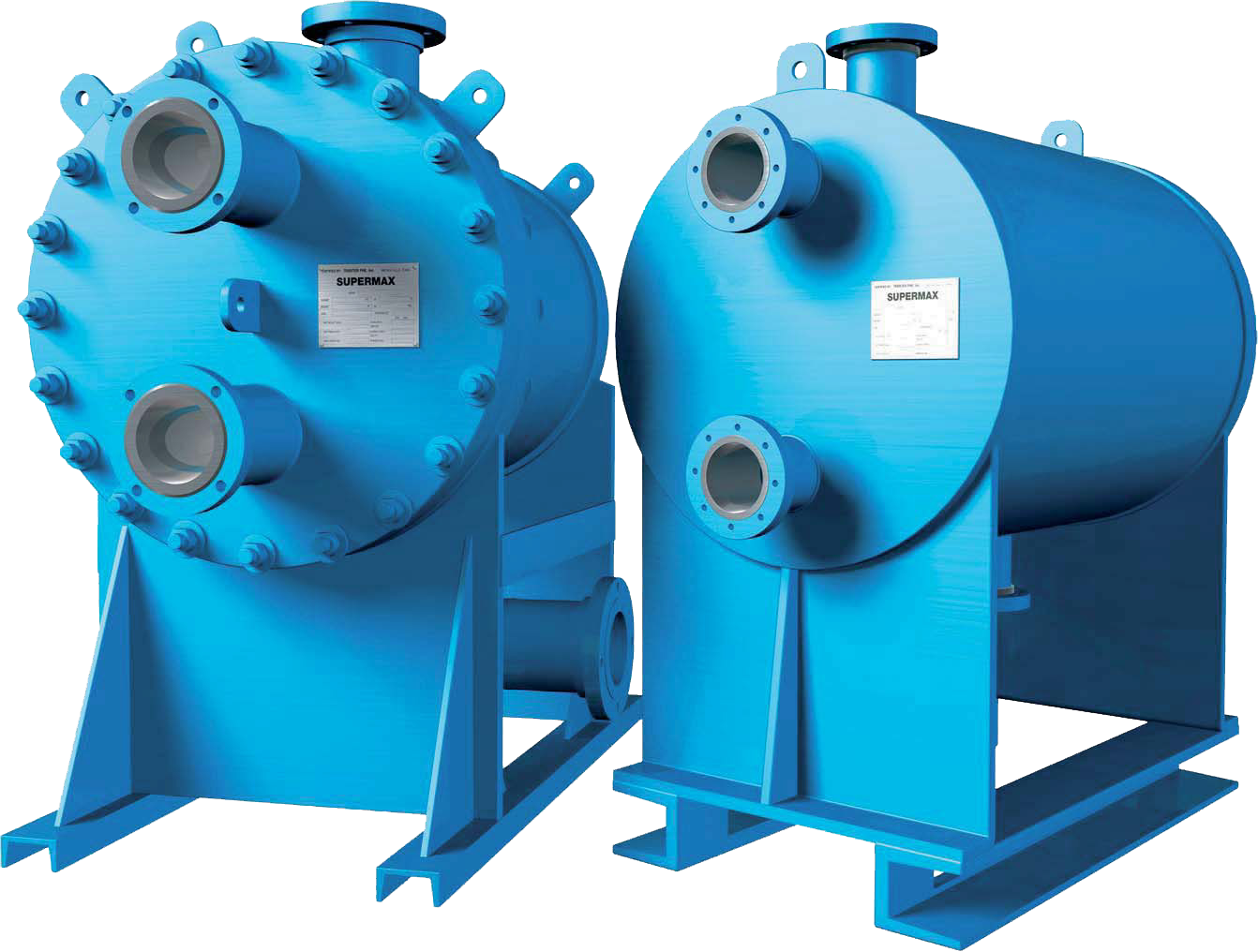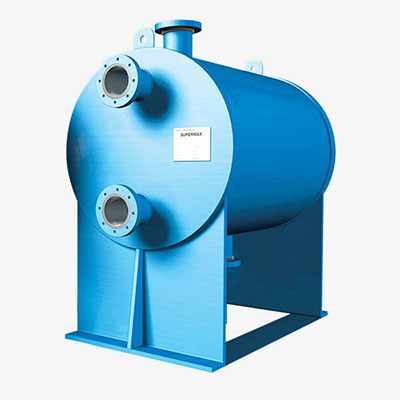Shell & Plate Welded Heat Exchanger
Shell & Plate Welded Heat Exchanger
heat exchangers
Tranter® patron & svejsede plade varmevekslere

EXTENDING CAPABILITY INTO EVEN TOUGHER DUTIES WITH WELDED HEAT EXCHANGERS
Tranter Shell & Plate Heat Exchanger is designed as a performance upgrade over shell & tube, block-type welded and brazed aluminum heat exchangers. The exchanger offers high thermal performance with compact size, similar to that of gasketed plate heat exchangers, with low hold-up volume and low installed weight, especially when filled. Now in its second generation of refinement, today’s Shell & Plate Heat Exchanger is the fruit of Tranter’s Welded Competence Center in Artern, Germany.
Combining field experience with design input from Tranter’s global R&D operations, this test bed of advanced manufacturing processes and equipment has introduced extended-capability refinements.
We are now only beginning to explore the shell & plate exchanger’s potential in ever-more-difficult duties. In addition to design improvements, we have added larger plates and extended-thermal-length oblong plates to the product line.
Designed to Distribute Stress
The heart of the Tranter Shell & Plate Heat Exchanger is its heat transfer element, also called the plate core, composed of round or oblong chevron-type plates welded into a cassette by a porthole perimeter weld. Cassettes are then placed together welded to each other using a perimeter weld.
The thermal element subassembly then has metal shell-side flow diverters, nozzles and an end plate welded to it. An exclusive cage structure (see picture), welded only to the end cover, surrounds and supports the plate core pack assembly. The cage prevents any cantilever stresses from being transferred to the plate pack. The result is a pressure vessel of high integrity, with an accordion-like core that is highly tolerant of thermal expansion.
The construction is more robust than in gasketed units, shell & tube exchangers and welded block-type square welded units. There are no gaskets to replace or fail. There are no tubes to vibrate under upset flow conditions and induce stress to welds, baffles and supports, with early failure the result. The fully welded round or oblong design, involving both plate port and perimeter welds, is an optimal stress-distributing shape; there are no 90° corners and edges subject to stress failures as with block-type plate heat exchangers.
Field-Proven Durability
-
Dye penetrant examination (all weld joints)
-
X-ray (applicable weld joints)
-
UT (applicable weld joints)
-
Helium Mass Spectrometer (entire unit)
DUTY-MATCHED MATRIALS

Plate materials may be Type 316L stainless steel, titanium or other alloys; shells may be fabricated of carbon steel, Types 304, 316, 316L stainless and titanium.
The unit can be fabricated from dissimilar metals when only one side will be exposed to corrosive conditions.
WHEN TO CONSIDER SHELL & PLATE WELDED HEAT EXCHANGERS

Whenever you are confronted with heat exchange under difficult physical or flow conditions, the Tranter Shell & Plate Exchanger is worth consideration
The unit can overcome footprint constraints, extreme pressures/temperatures, fouling/scaling conditions and corrosive attack with liquids, gases, steam and two-phase mixtures.
The turbulent flow created by the corrugated plates produces high heat transfer efficiency and limits fouling, or freezing in refrigeration/cryogenic service.
The exchanger’s wide temperature/pressure ratings offer good performance with natural refrigerants such as ammonia and carbon dioxide.
The exchanger can handle close temperature approaches. Small hold-up volume provides fast start-ups and close following of process changes. Refrigerant charges are significantly low in refrigeration and cryogenic service, which results in lower operating and disposal costs.
The Tranter Shell & Plate Exchanger is designed for pressures to 100 barg (1450 psig) and temperatures from -58° to 900°C (-50° to 1650°F) for standard range units. Extended range units are available.
Fluids can undergo phase change on either the plate or shell side. The exchanger is particularly suited to applications having a flow imbalance, allowing higher flow rates on the shell side. The Tranter proprietary welding method used for the port hole and perimeter welds has been preferred for demanding chemical processing applications.
- PDF Product BrochureOpens in a new tab

